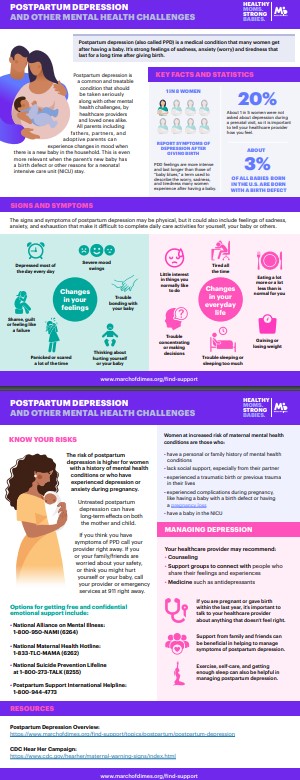
“As content writers, our responsibility extends beyond the mere transmission of information.” These are the words that I wrote on a sticky note, and I look at them regularly whenever I am in a brainstorming session for a new work project or in deep thought about the pivotal role content writers play in health information delivery.
I have spent nearly a decade working in the health communication space, and over time have come to understand that health content writers serve as architects who help construct bridges that connect individuals to vital health knowledge. Our work truly goes beyond simplifying complex medical concepts and presenting information logically; we foster a reader-friendly environment that encourages individuals to explore health information confidently.
However, as we continue to work towards creating a more accessible and inclusive communication landscape, there are three considerations health content writers must keep in mind. The first relates to plain language, the second speaks on translation and transcreation of content, and the third asks us to acknowledge the depth of cultural diversity among audiences.
Let’s unpack what this all actually means.
1. Embracing Clarity Through Plain Language
A fundamental aspect of effective health communication lies in the use of plain language. Plain language involves distilling complex medical jargon into clear and straightforward terms. This writing style prioritizes clarity and simplicity, making health information comprehensible for a diverse and linguistically varied audience.
For example, we worked with Content Science to create this amazing infographic about a nuanced topic, postpartum depression. it’s one of my favorite instances of how plain language coupled with engaging graphics can communicate in a powerful way.

As another example, we have this infographic to raise awareness about early induction which is one of the most loved and popular across March of Dimes.
The truth is that plain language stands as a beacon of accessibility. It transcends barriers and provides a common ground where everyone, regardless of their language proficiency, can access and understand information. Plain language is not merely a stylistic preference; it is a commitment to inclusivity and equity. For this reason, content writers should strive to use everyday language that resonates with the target audience. By ensuring that vital information is accessible to everyone, they contribute to closing knowledge gaps and in turn impact health equity.
In this same vein, as we motivate others to embrace plain language, content writers become advocates for health literacy. We help pave the way for a more informed society, where individuals with limited English proficiency for example, are not passive recipients of health information but instead active participants in their well-being.
2. Transcreation as a Cornerstone of Effective Translation
To truly resonate with the richness of diverse cultures, translation alone falls short. Instead, we should harness the transformative power of transcreation. This is a process that goes beyond mere linguistic translation—it ensures that content is made available in other languages and echoes the cultural nuances that exist within a community, population, or audience.
Transcreation is an art that recognizes the depth of cultural diversity within language-marginalized populations. It is the alchemy that transforms translated content into a tapestry woven with cultural sensitivity, idioms, and contextual relevance. For example, a health campaign encouraging regular exercise might use jogging as a metaphor for a healthy lifestyle. In a culture where jogging is not a common activity or holds different connotations, a literal translation might miss the mark. Transcreation allows for the substitution of jogging with an activity that resonates more deeply within the target culture, ensuring the message’s effectiveness.
Our Spanish language website, nacersano.org is a great example of transcreation. We don’t use AI to translate the content from English to Spanish (e.g. an embedded translator). Most of the articles and content you see were written and/or translated, by March of Dimes staff. In recent years we’ve used a translation house because of capacity issues internally, but all pieces go through a thorough review because we know content can’t always be a 1:1 translation.
For content writers, transcreation can be an indispensable strategy that has been shown to have a tremendous effect on the relevance and impact of translated content. But again, it is important that we understand what transcreation is and is not. Transcreation encapsulates an understanding of cultural beliefs, practices, and traditions and ultimately requires us to want to write content with the unique perspectives and experiences of the audience in mind.
3. Red Flags in Culturally Competent Content
Any time I am asked to weigh in on best practices for content delivery for populations with a shared heritage or language, I find myself dismantling misconceptions and a lot of misunderstanding.
As previously highlighted, cultural nuances exist within groups, including those who speak the same language. This is so important to consider when strategizing and planning content. As an example, Latinx and Hispanic communities are not a monolith. Spanish spoken by those of Chilean heritage is different than Spanish spoken by those of Puerto Rican heritage. Spanish speakers are not a monolith. I cannot stress this enough.
Different cultures have different needs and different ways to fulfill those needs. For example, folic acid is an important nutrient that can reduce the risk of neural birth defects in babies; Hispanic/Latina women are more likely to have a baby with a neural birth defect (lack of knowledge of folic acid is one reason).
In response to this we created this section on nacersano.org with recipes that contain folate rich ingredients (folate is the natural form of folic acid). The recipes are culturally relevant, but represent a variety of Spanish speaking countries and cuisines.

It’s another example of how we make an effort to provide our Spanish speaking audience with information that is relevant to them, despite having a shared language.
As content writers, we must do our due diligence to recognize the expansive diversity in linguistic backgrounds within an audience, as well as across audiences. Collaborating with subject matter experts becomes paramount to infuse health content with the richness of cultural context. This collaborative effort ensures that content is not only accurately translated but also culturally resonant, fostering a deeper connection with readers.
Words Can Build a Healthier Society
Tailoring messages to align with cultural preferences and sensitivities enhances the likelihood of positive reception and engagement. Plain language, transcreation, and cultural nuances are integral components of this process, ensuring that health information is accessible, relatable, and impactful for all individuals. As we strive for health equity, let us recognize the power of words to bridge gaps and build a healthier society.
Events, Resources, + More
The Ultimate Guide to End-to-End Content
Discover why + how an end-to-end approach is critical in the age of AI with this comprehensive white paper.
The Content Advantage Book
The much-anticipated third edition of the highly rated book by Colleen Jones is available at book retailers worldwide. Learn more!
20 Signs of a Content Problem in a High-Stakes Initiative
Use this white paper to diagnose the problem so you can achieve the right solution faster.
Upskill with Content Science Academy
Training for modern content roles through on-demand certifications + courses or live workshops.






Comments
We invite you to share your perspective in a constructive way. To comment, please sign in or register. Our moderating team will review all comments and may edit them for clarity. Our team also may delete comments that are off-topic or disrespectful. All postings become the property of
Content Science Review.